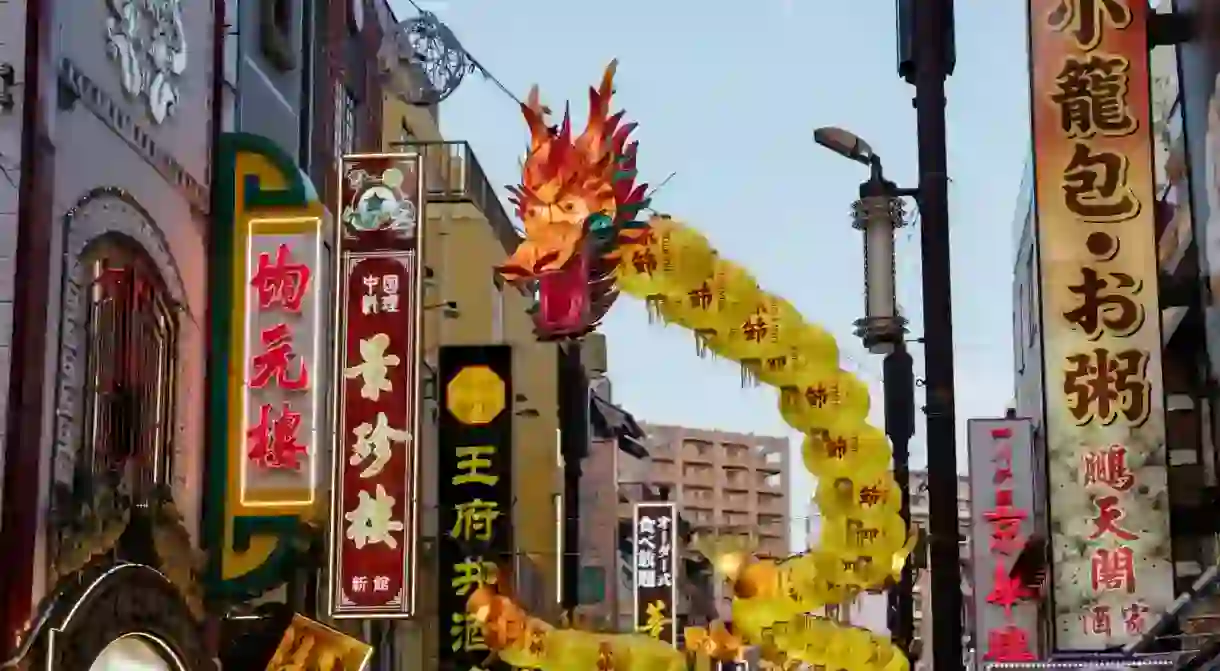How to Celebrate Chinese New Year in Yokohama

Running from late February until early March, with exact dates depending on the lunar calendar, Chinese New Year is a pretty big deal in Japan. Also known as the Spring Festival, this 15-day-long celebration is best experienced in Yokohama, a city with the biggest Chinatown in Asia, one of the biggest Chinatowns in the world, and a large population of Chinese expats.
Known to the locals as Chukagai, Yokohama’s Chinatown is a culturally diverse pocket of this port city, worth visiting anytime of year, but especially worth the time during the New Year celebrations. From gatherings at the well-trodden Kanteibyo and Masobyo Temples, to pop-up stages appearing on seemingly random street corners, during February, the town is a bustling hive of activity. Here’s a little on guide on when, where, what and how to celebrate Chinese New Year in Yokohama.

When is the best time to go and what can you see?
Coinciding with Chinese New Year, the date of Yokohama’s celebrations depend on the lunar calendar, but typically run from the middle of February until early March. Kicking off the day of, or the day after, the official start of the New Year is the “Countdown,” an opening ceremony of sorts that typically runs from the evening until late.

The day or so after, but during the early days of the celebrations, the city hosts the eye catching “Cǎi Qīng Lion Dance,” featuring large lion-style puppets that parade through the main strip of Chinatown’s streets. A sign of prosperity and good fortune, the appearance of the lion happens in the mid-afternoon (4pm) and his dance typically runs until night (8pm). During his run through the streets, the lion blesses visitors with good fortune and bites the red envelopes (filled with money) that hang in front of local stores.

If you miss this event, don’t sweat it, a few days later during the first weekend of the festival is arguably the biggest celebration. Running over the Saturday and Sunday, this event is known as the “Spring Festival Traditional Performance” and features the festival’s main attractions. Expect to see a reappearance of those cheeky, money-eating lions, live music shows, and astonishing live acrobatic performances popping up on street corners throughout the area.

Closer to the end of the month is the Celebration Parade, held on the 9th day of the festival, it’s a party held on the birth of China’s Jade Emperor, which runs through until the 10th day as well. Expect more extravagant dragon marches, similar to the aforementioned lions, but longer (it’s said the longer the dragon, the more luck). This 10th day is also known as a day for feasting and a great excuse to go restaurant and food-stand hopping throughout the area.

Finally, on the 15th day of celebrations, you’ll be able to witness arguably the most visually striking event, known as “The Lantern Festival.” During this time, festival goers write their hopes and wishes for the New Year on these lanterns which are displayed throughout the streets of Chinatown, beginning at Masobyo, one of the town’s main temples. With this comes the end of festivities and the beginning of another year on the Chinese calendar.
Where to go?
Chinatown is located in central Yokohama, well connected with the rest of the city, so once you find yourself at the towering red gates of the Chinatown entrance, you’re basically about to step right into the heart of the events. That said, there are a number of major sacred sites worth visiting anytime, but most especially during the New Year celebrations.

Kanteibyo and Masobyo Temples are two main sites of the major celebratory events, both located within a few minutes’ walk of one another. Kanteibyo is Chinatown’s main temple site, while Masobyo is where you’ll find the large population of lanterns that cover the area during the final days of the event. Another main point worth visiting is Yamashita-cho Park, sitting along the water just outside the Chinatown entrance gates. Here you’ll be able to snag a good position to view the parades as they pass by the park grounds.
How do you get there?
The best way to get to Yokohama Chinatown from Yokohama Station is by taking the eight-minute trip on the Minatomirai metro line. Hop off at Motomachi-Chūkagai Station, take the Chūkagai exit and you won’t be able to miss it. If you’re traveling from Tokyo, getting to Yokohama is deceptively easy. Just hop aboard the Tokyu Toyoko metro line from Shibuya Station. This line turns into the Minatomirai metro line at Yokohama Station. All in, the journey takes around half an hour.














